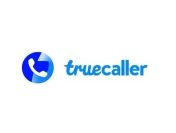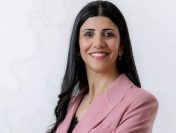Consumers move seamlessly all forms of media. Even though marketers struggle to balance ad money spent with consumer time spent, there are those who believe that marketing is catching up. Zeba Mahmud takes a closer look at the debate…
Jad Chababi, Regional Business Director, J3 MENA, part of MCN For The Argument
On Why ‘Digital Marketing’ and not Just ‘Marketing’…
It is unarguable that to be a successful marketer, digital has to be at the core of what you do. This explains why the past few years have witnessed businesses transitioning talents into integrated roles, encouraging them to build brand stories across different platforms by thinking from a media neutral standpoint. However, the pace at which the digital ecosystem is growing has led to a proliferation of its disciplines and the emergence of new channels. That, fueled by the marriage of data and technology, has exponentially increased the amount of ‘solutions’ available for brands to grab. Finding the right formula within this complex environment requires a deep understanding of the technicalities of each channel. This is where the ‘digital’ marketer comes in. Working alongside the integrated marketer, this role remains pivotal in ensuring a smooth consumer journey online while maintaining synergy and optimizing efficiencies across the different elements.
On Ad Spend Versus Time Spent Imbalance…
The ‘digital confidence gap’, as we once called it, was believed to be due to the fact that advertisers were uncertain of how to effectively utilize some digital channels. Today, we attribute this gap to three factors:
The time consumers spend online and the ability for brands to effectively communicate are not a one-to-one ratio. Being connected doesn’t necessarily mean being receptive to advertising; consumer might be spending time on emails, messaging apps or running last minute errands online. Additionally, advertising effectiveness varies by media – attention span on TV remains one of the highest – which affects the ratio and eliminates the possibility of looking at time spent vs. budget spent proportionally.
Region’s readiness: While brands are more than ever eager to engage with their audiences online, a wide mix of assets needs to be developed to bring storytelling to life and engage in real-time. This requires a talent pool that is geared up to deliver digital solutions in short time; strong digital talent is a scarce resource that the region is currently challenged with.
Arabic digital content is growing, and the big bucks are still invested behind TV content. This in turn attracts the majority of the advertising dollars, making budgets hard to migrate outside the platform and into digital avenues.
On a Complex, Fragmented Digital Ecosystem…
Fragmentation is often used as a negative term to define the spread of advertising budgets across several platforms. But fragmentation can be a good thing. The emergence of new players creates healthy competition that upgrades the quality of offering – be it through more solutions or better quality content. Additionally, fragmentation should be viewed from a ‘relevance’ perspective. Consumers are moving away from the Mad Men era generic content that was consumed by everyone, towards searching for content that is more relevant to their interests and passion points. Answering this need means moving from a ‘one size fits all’ approach to creating platforms that cater to each of those interests. This plays to the advantage of the advertisers who are now offered more proximity with their consumers, and the opportunity to engage in conversations in an environment that portrays brands as being more relevant.
Saleh Ghazal, Business Unit Director, OMD UAE Against The Argument
On Why ‘Digital Marketing’ and not Just ‘Marketing’…
Digital is mainstream and industry professionals are well acquainted with its role in communication. Being a technical field, it requires special attention to plan and optimize. Technology advances have helped planners and marketers to do this better, as they have access to more data to understand and analyze. The key point is that digital and other media touch points must be considered as a whole rather than in silos so that they are working together to answer a marketer’s objectives. The industry will have to find a balance between hybrid generalist marketers and digital specialists.
On Ad Spend Versus Time Spent Imbalance…
Advertising investments are less connected to pure media consumption and more to the role each medium plays in the purchase behavior of a product or its contribution to the overall objectives. Airlines, for example, invest heavily in digital because it is a medium that features heavily in their purchase funnel. People search, compare prices and buy online. This isn’t necessarily the case for all industries and businesses, so each will have a particular set of media priorities as a result. That said, investments across the digital spectrum have increased significantly in the region and will ultimately reach the global standards. Media costs on TV and online are obviously different so the comparison of the two media is more valid on the basis of presence. Still, even with 10-20 per cent of total media investments on digital, we are already delivering significant results.
On a Complex, Fragmented Digital Ecosystem…
I believe that this ‘complication’ is the road to simplification, expanding before it finds its balance. By nature, anything unknown to the common human mind is complicated. After acquainting ourselves with those new fragments, I believe the industry will develop the most efficient way to thrive in this ecosystem. We have already witnessed this with programmatic buying and we will keep on finding new ways to make the ecosystem a better one.
The article was first published in The Arabian Marketer June 2015 print issue





